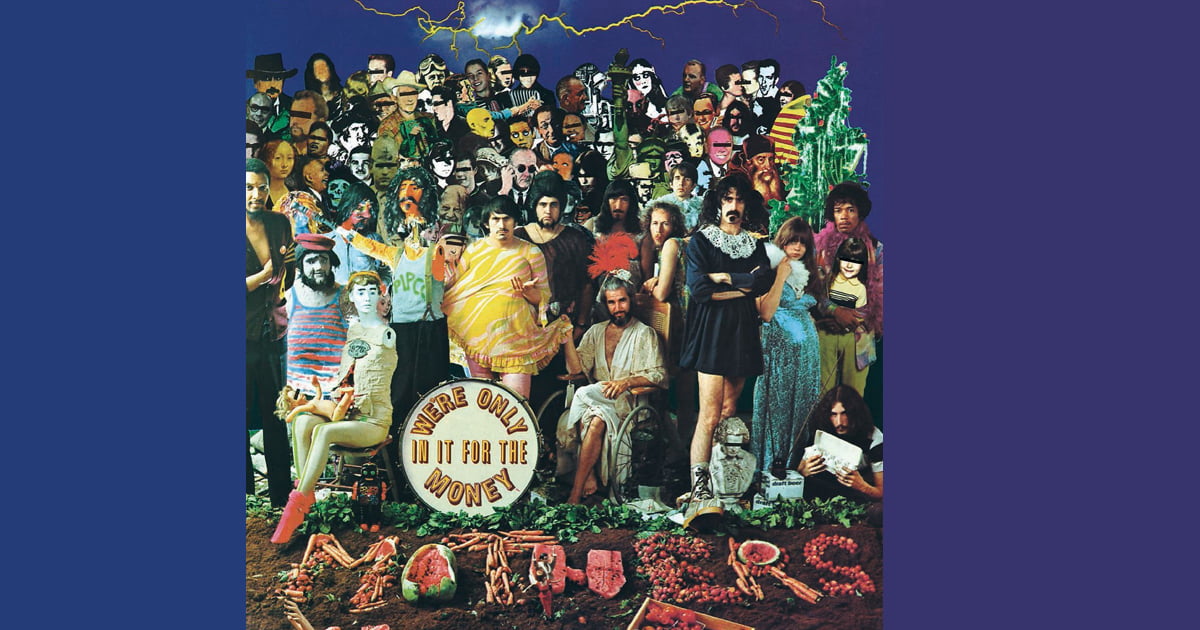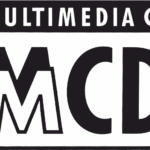It’s the time of year for saving money!
The more things change the more they stay the same
— Jean-Baptiste Alphonse Karr (1849)
“I’m gonna tell you the way it is and I’m not gonna be kind or easy”
— Frank Zappa (1967)
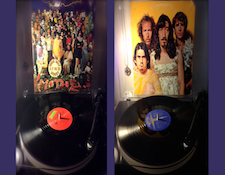 When I first heard that Frank Zappa’s legendary album We’re Only In It For The Money had been reissued, I got a pang of angst in my stomach worrying about whether they (ie. the labels, the Frank Zappa estate, etc.) would screw things up. I mean, there was precedent for such fan worries as the album has a sordid past involving everything from censorship of parts of the original recording made without Zappa’s knowledge or approval from the original issuing label (MGM’s Verve Records) to subsequent bastardization by Zappa himself at the dawn of the digital age (re-recording drums, bass and other parts for its first CD reissue) and then the inclusion of that same awful mix on the could-have-been-wonderful compilation from 2009 called Lumpy Money.
When I first heard that Frank Zappa’s legendary album We’re Only In It For The Money had been reissued, I got a pang of angst in my stomach worrying about whether they (ie. the labels, the Frank Zappa estate, etc.) would screw things up. I mean, there was precedent for such fan worries as the album has a sordid past involving everything from censorship of parts of the original recording made without Zappa’s knowledge or approval from the original issuing label (MGM’s Verve Records) to subsequent bastardization by Zappa himself at the dawn of the digital age (re-recording drums, bass and other parts for its first CD reissue) and then the inclusion of that same awful mix on the could-have-been-wonderful compilation from 2009 called Lumpy Money.
Before I get to the formal “review” portion of our Internet entertainment here, I must point out some factoids relative to this record for those not in the know the significance of this record. Issued less than a year after the release of the groundbreaking Beatles album Sgt. Pepper’s Lonely Hearts Club Band, Zappa’s We’re Only In It For The Money was a scathing flip-side commentary to the harsh realities of the so-called “Summer of Love” and related fallout from and surrounding it. The album called out the phonies who were all part of the equation — from hippies to parents to police to governing bodies of the day (if you will) — all skewered in equal measure for hypocrisy, stupidity and inhumane actions. Ultimately, We’re Only In It For The Money is a reminder to everyone take note of what is happening around us (an ongoing theme through Zappa’s music throughout most of his career, actually).
Zappa was right on top of all this, calling it out for what it was as it was happening. And now, here we are 50 years on since it was recorded (49 since it was released) and this social documentary wake up call remains as relevant today as it was back then… perhaps more so.
It is perhaps the final track on the album, an avant-garde musique concrète piece called “The Chrome Plated Megaphone of Destiny” that underscores the foreboding Zappa had for the times. In the liner notes he suggested that listeners first read Franz Kafka’s In The Penal Colony before listening to it, adding:
“As you listen, think of the concentration camps in California constructed during world war II to house potentially dangerous oriental citizens… the same camps which many say are now being readied for use as part of the FINAL SOLUTION to the NON-CONFORMIST (hippy?) PROBLEM today.”
Sound familiar?
Planting that seed, I’ll leave it up to you, Dear Readers, to take the initiative to connect the societal dots between then and now.
Now, back to the review portion of our show:
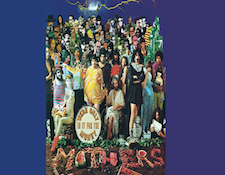 This new reissue sounds overall pretty wonderful! It is important to acknowledge that We’re Only In It For The Money has never “sounded” particularly great in an audiophile sense. I mean… as much as I love this album, it would not be a first or even fifth or even 10th choice as a demo record… regardless that it is in the Rolling Stone Magazine list of Top 500 albums of all time… regardless that it made it into the Top 30 that year (assuming the Wiki is accurate!).
This new reissue sounds overall pretty wonderful! It is important to acknowledge that We’re Only In It For The Money has never “sounded” particularly great in an audiophile sense. I mean… as much as I love this album, it would not be a first or even fifth or even 10th choice as a demo record… regardless that it is in the Rolling Stone Magazine list of Top 500 albums of all time… regardless that it made it into the Top 30 that year (assuming the Wiki is accurate!).
My original pressings of We’re Only In It For The Money have always delivered pretty compressed listening experiences. I used the plural here because I own about 5 or 6 copies of the album in various levels of condition and (probably) pressing production. All those variants in disc mastering back in the day likely introduced subtle variants worth at least considering depending on your level of fanaticism about this sort of thing. And with all the weird edits this recording endured along the way through the censorship process, it is quite possible (and I’m speculating here, folks) that the tape used to make the original pressings may have itself been several generations removed from the master tape depending on how the edits were handled by MGM/Verve Record as well as Frank Zappa himself.
It is known that this new reissue was mastered from a digital source. For us audiophile flavored individuals, I have confirmed via Universal Music’s PR team and Vaultmeister Joe Travers himself that this LP was mastered from the approved FZ digital master which was done for the 1995 CD issue. When I asked about this he replied (via Universal’s internal PR folks):
“FZ created an approved master of the original 1968 mix which was first issued on CD in 1995. That master lives now as a .WAV file at 44.1K 16B. This file is what Bernie Grundman and I made the latest LP reissue from. This was used because the original tape is really damaged.”
That said, this version sounds at least as good as — and in many ways better than — the seemingly heavily compressed and often lackluster original Verve Records pressings form the 1960s. Yes, even at 16-bits and 44.1 kHz — effectively CD quality — it sounds better than my original LPs.
I know what you’re thinking right about now, Dear Readers…
Stick with me…
]]>Again, I am speculating here — just to be clear, folks — but my suspicion as to why it sounds better than my old LPs might be chalked up to many different reasons. First and foremost, I suspect that we are perhaps hearing the master tape without whatever heavy handed compression scheme that may have been used back in the day to make the original albums. And we’re not hearing it through noisy vinyl pressings
This new version was re-mastered for LP by the legendary Bernie Grundman who, along with Vaultmeister Joe Travers, no doubt gave the album a much more considerate and thoughtful mastering process than perhaps was done for Frank Zappa back in 1968. Consider that back then, his relations with the label were straining…. so perhaps their fears of lawsuits may have interfered with production quality controls (ie. ‘lets get this thing done and out the door already!’).
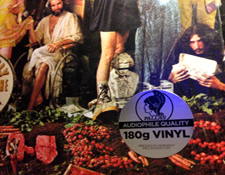 That said, I think the new version sounds quite fabulous, albeit a little different than the original. The dark, quiet, perfectly centered vinyl disappears, allowing you to hear the music in a clarity only hinted at on original pressings I have heard — original pressings I have come across have not been particularly quiet.
That said, I think the new version sounds quite fabulous, albeit a little different than the original. The dark, quiet, perfectly centered vinyl disappears, allowing you to hear the music in a clarity only hinted at on original pressings I have heard — original pressings I have come across have not been particularly quiet.
You can also hear more details on this new version, often in places where you least expect them. For example, on the maniacal “Flower Punk,” Jimmy Carl Black’s crazy kick drum and cymbal pulse come through super clear on this new version while on the original is fairly squashed down. Don’t me wrong, his playing IS all there on the original pressings. But on this pressing his drums are more distinct and he sounds more like a rapid live machine gun fire vs. thumping on a tub of beans. The ride cymbals are also more distinct on the new version.
Hardcore Zappa-philes probably know by now that this new reissue of We’re Only In It For The Money is the standard censored incarnation (with the reversed “Hot Poop” section at the end of Side One). As far as I know, and from what I’ve been able to ascertain reading on the web and also memory from past discussions, the only uncensored version of the album is the version Zappa put together from the salvaged multi-tracks when he re-recorded drums and bass parts in the 1980s (to the chagrin of most fans — which is why he ultimately reissued the original mix off a safety copy that was found).
So, there in lies the rub, Dear Readers….
If you are a hardcore Zappa fan, you’ll no doubt want to pick up the new version of We’re Only In It For The Money — if only for the fact that for the first time it is appearing with the covers reversed back to the way it was supposed to have been issued in 1968, pre-censorship, with the Sgt. Pepper-parody on the outside cover.
If you are a new fan curious to learn about Zappa’s history, this new reissue is a fine place to begin your exploration — it sounds respectable and is a pretty accurate representation of what the original recording sounded like in 1968.
For audiophiles who are most concerned about a quiet, well centered, high quality quiet pressing, the new Pallas-pressed, 180-gram edition has appeal.
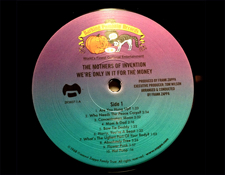 Purists, of course, will insist that the original Verve pressings are the only way to go — there is a certain and undeniable warmth to the original pressings, boxy compressed sound and all. But what the new digital sourced version loses in warmth it more than makes up for in clarity.
Purists, of course, will insist that the original Verve pressings are the only way to go — there is a certain and undeniable warmth to the original pressings, boxy compressed sound and all. But what the new digital sourced version loses in warmth it more than makes up for in clarity.
All of these considerations are valid, so ultimately the choice is up to you, Dear Readers, as to what is most important.
If you’ve never heard We’re Only In It For The Money, and have an open mind for both catchy melodies, absurdist humor and striking jabs at the heart of all of us, you really owe it to yourself to check this record out.
We’re Only In It For The Money is like looking into a mirror and not seeing the fairest of them all staring back at you from the other side .
We’re Only In It For The Money has not sounded this good on vinyl since…. well… since the original pressings back in the day. And finding a pristine original blue-label Verve Records copy is next to impossible for a reasonable price, so this is the next best thing for most of us.
Highly recommended.
